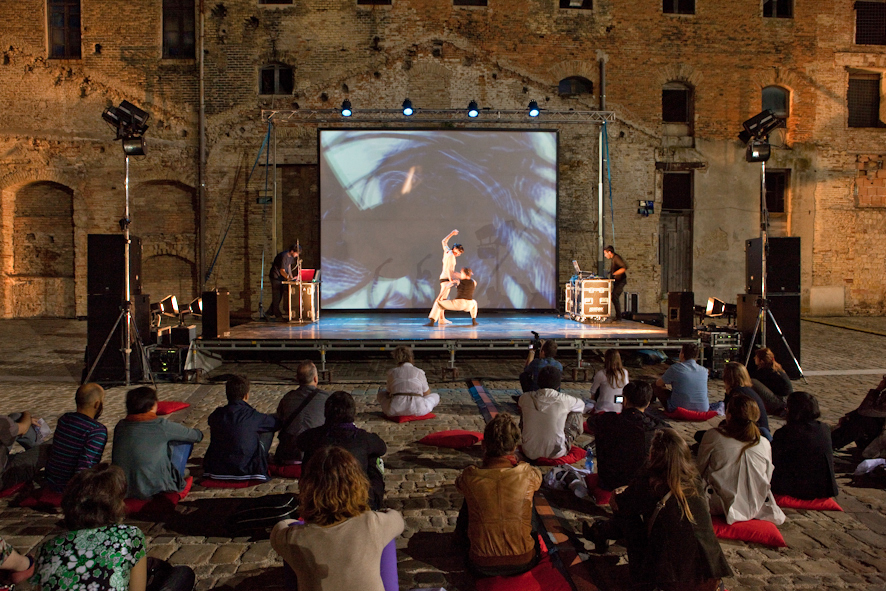
What is BJCEM Network
BJCEM, Biennale des jeunes créateurs de l’Europe et de la Méditerranée, was founded in Sarajevo in 2001.
BJCEM believes that art and culture play a fundamental role in our societies by fostering respect and understanding for diversity through the discovery of the values of different cultures that enrich our own. Art is a universal language and, as such, it contributes to bridge borders and resolve conflicts.
Initially created to oversee the Biennale, today BJCEM is a solid network with 47 members, ranging from cultural institutions to independent organizations, with partnerships throughout Europe, the Middle East and Africa, also with organizations and projects focused on the Mediterranean Diaspora. We are present in 15 countries: Albania, Bosnia and Herzegovina, Cyprus, Greece, Italy, Lebanon, Malta, Montenegro, Norway, Republic of San Marino, Serbia, Slovenia, Spain, Turkey and the United Kingdom. We also cooperate with an external partner in Austria.
BJCEM aims at fostering mutual understanding, intercultural dialogue and collaboration in the arts among young creators, around the Mediterranean. Our projects and activities provide training, mobility, and exchange opportunities that, in turn, support artists’ creative processes, through personal and professional growth.
Registered as an international association in Belgium with headquarters in Brussels, Belgium, and an executive office in Turin, Italy, BJCEM is an independent organization, open to all those who shares its aims and interests without cultural, religious, political, social or moral distinction. It is a member of the Anna Lindh Foundation and of Culture Action Europe. BJCEM acknowledges the support of the City of Turin.
What is the Biennale of Young Artists from Europe and the Mediterranean
The Biennale of Young Artists from Europe and the Mediterranean was held for the first time in Barcelona in 1985, from an original idea of ARCI Ragazzi, the youth branch of the Italian ARCI.
During its first editions, the Biennale was conceived as a multidisciplinary event for young artists under the age of 35, from Europe and the Mediterranean. The goal was to showcase their artistic production, by which they expressed their personal vision of the world, and to support young artists’ creativity as a resource, and not only as a form of entertainment. Through their creative force, young people were enabled to express themselves as well as their vision of reality; to make visible the alternative proposals of a generation not fully satisfied by tradition. Above all, it provided them with an opportunity to engage politically, through art, for their own personal and professional development.
To date, the Biennale has held 18 editions in:
Barcelona 1985, Thessaloniki 1986, Barcelona 1987, Bologna 1988, Marseille 1990, Valencia 1992, Lisbon 1994, Turin 1997, Rome 1999, Sarajevo 2001, Athens 2003, Naples 2005, Puglia 2008, Skopje 2009, Thessaloniki-Rome 2011, Ancona 2013, Milan 2015, Tirana-Durres 2017.
The Biennale has involved over 10.300 artists, with a total of over 750.000 visitors. It has been acknowledged as the most important event for young artists in the Euro-Mediterranean region. Multidisciplinarity has always been one of its strengths, because it has spanned from the visual arts to the applied arts, moving images, literature, gastronomy, music and performances, to name just a few.
During each Biennale, several hundred artists peacefully “occupied” the host city over days and weeks: the arts have been a means to invest the city and prove the potential of culture as a tool for social and human development.
In the latter years and, given the general context, to make the event more sustainable, the Biennale has changed format and has reduced the total number of artists involved. It has continued to be the event where to showcase young emerging artists from the Euro-Mediterranean but it has also developed into a structured opportunity for research, training, networking to set-up transnational collaboration projects.
The latter two editions have been entrusted to high profile curators in order to ensure a coherent content design and a high-quality event: Andrea Bruciati, Director of the Arte Fiera Verona and currently Director of Institute Villa Adriana and Villa d’Este, curated Mediterranea 17 (October 2015, Milan) and the special side-event, Through the Barricades, to celebrate the Biennale’s 30th anniversary. Driant Zeneli, curated Mediterranea 18 (Tirana/Durres, 2017); he recently represented Albania at the Venice Biennale.
The Biennale has made possible, especially in recent editions, collaborations in various forms, from artists’ residencies to training and research projects, from presentations of the results of European projects to workshops, actively involving both local communities and BJCEM members. The Biennale is indeed the culmination of a research project that accompanies young artists in their growth, by offering them not only an exhibition showcase, but by giving them useful tools to become active professional artists in the Euro-Mediterranean region. In the last 30 years, the region has undergone profound changes and the Biennale has stayed present, as a relevant actor. It has become an independent and consolidated international network, where organizations and professionals meet in a safe space and can work together with the shared aim of making the Mediterranean a place where dialogue and cooperation are understood as tools for peace building and development.
A platform for the launch of the careers of young Euro-Mediterranean artists, the Biennale’s success is proven by the success of the artists that it has unwaveringly supported and promoted. Among these, we are proud to mention IRWIN, Grazia Toderi, Eva Marisaldi, Miltos Manetas, Vanessa Beecroft, Eulalia Valldosera, Adel Abdessemed, Vasco Araújo, Tobias Putrih, Erzen Shkololli, Mathieu K.Abonnenc, Ayreen Anastas, Giorgio Andreotta Calò, Haris Epaminonda, Coniglio Viola, Damir Očko, Valerio Berruti, Gian Maria Tosatti, Didem Erk, Ayman Ramadan, Elena Mazzi and Emilio Vavarella.